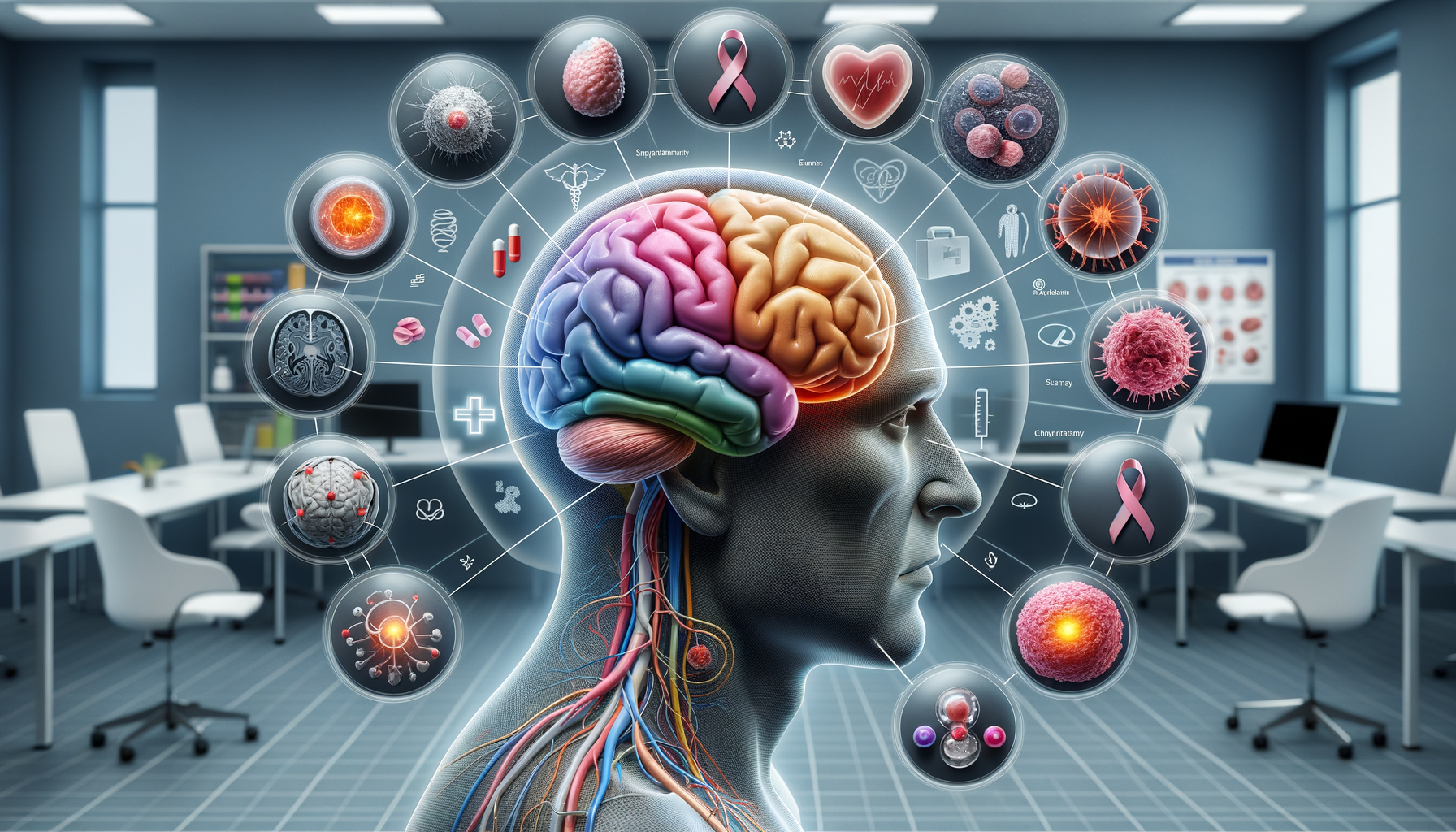
Brain Cancer Treatment Options: What Leading Oncologists Advise
Understanding Brain Cancer
Brain cancer, a formidable adversary in the realm of medical science, presents unique challenges due to its location and complexity. It encompasses a range of malignancies that originate in the brain’s tissues, affecting both adults and children. The most common types include gliomas, meningiomas, and medulloblastomas, each with distinct characteristics and treatment approaches.
Gliomas, arising from glial cells, are the most prevalent and can be further classified into astrocytomas, oligodendrogliomas, and ependymomas. Meningiomas originate in the meninges, the protective layers surrounding the brain and spinal cord, and are generally benign but can become malignant. Medulloblastomas, primarily affecting children, originate in the cerebellum and tend to spread to other parts of the brain and spinal cord.
The complexity of brain cancer lies in its symptoms, which can vary widely based on the tumor’s location, size, and growth rate. Common symptoms include headaches, seizures, cognitive or personality changes, and motor or sensory impairments. These symptoms often mimic other neurological disorders, making early diagnosis challenging yet crucial for effective treatment.
Diagnosis and Staging
Accurate diagnosis and staging are critical steps in the management of brain cancer, guiding the treatment plan and prognosis. The diagnostic process typically begins with a neurological examination, followed by imaging studies such as MRI or CT scans, which provide detailed images of the brain’s structure and reveal the presence of tumors.
Advanced techniques like PET scans and functional MRI may be employed to assess the tumor’s metabolic activity and its impact on brain function. A biopsy, involving the removal and microscopic examination of tumor tissue, is often necessary to determine the cancer type and grade, providing essential information for staging.
Staging brain cancer involves assessing the tumor’s size, location, and extent of spread. Unlike other cancers, brain tumors are not staged using the traditional TNM system due to their unique nature and impact. Instead, grading, based on histological examination, plays a crucial role, with grades ranging from I (least aggressive) to IV (most aggressive), influencing treatment decisions and outcomes.
Treatment Modalities
Treatment for brain cancer is multifaceted, often involving a combination of surgery, radiation therapy, and chemotherapy. The choice of treatment depends on various factors, including the tumor’s type, grade, location, and the patient’s overall health.
Surgery, aimed at removing as much of the tumor as possible, is often the first line of treatment. Advances in surgical techniques, such as awake craniotomy and image-guided surgery, have improved outcomes by minimizing damage to surrounding healthy tissue. However, complete removal may not always be feasible, especially if the tumor is located in a critical brain area.
Radiation therapy, using high-energy beams to destroy cancer cells, is commonly used post-surgery to target residual tumor cells. Techniques like stereotactic radiosurgery offer precise targeting, reducing exposure to healthy tissue. Chemotherapy, using drugs to kill or inhibit cancer cells, can be administered orally or intravenously, often in conjunction with other treatments to enhance effectiveness.
Innovative Therapies and Research
The landscape of brain cancer treatment is continually evolving, with research and innovation paving the way for new therapies. Immunotherapy, which harnesses the body’s immune system to fight cancer, is showing promise in treating certain brain tumors. Techniques such as checkpoint inhibitors and CAR T-cell therapy are being explored for their potential to improve outcomes.
Targeted therapy, focusing on specific genetic mutations or proteins that drive cancer growth, offers a more personalized approach. Drugs targeting the EGFR and BRAF mutations, common in certain brain tumors, are under investigation, with some already in clinical use. Additionally, research into tumor-treating fields, which use electric fields to disrupt cancer cell division, is ongoing, offering a non-invasive treatment option.
Clinical trials play a vital role in advancing brain cancer treatment, providing patients access to cutting-edge therapies and contributing to the scientific understanding of the disease. Participation in trials offers hope for improved survival rates and quality of life, underscoring the importance of continued research and innovation.
Coping and Support
Receiving a brain cancer diagnosis can be overwhelming, affecting not only the patient but also their families and caregivers. Emotional and psychological support is crucial in navigating the challenges posed by the disease and its treatment.
Support groups, both in-person and online, offer a platform for sharing experiences, advice, and encouragement, fostering a sense of community and understanding. Counseling services, provided by mental health professionals, can help patients and families cope with the emotional impact, addressing issues such as anxiety, depression, and fear of recurrence.
Practical support, including assistance with daily activities, transportation, and financial planning, can alleviate some of the burdens associated with treatment. Organizations dedicated to brain cancer advocacy provide resources and information, empowering patients to make informed decisions about their care and treatment options.